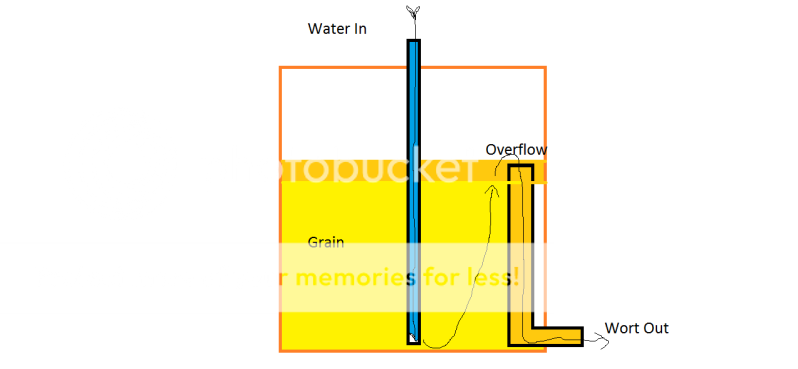AdamCanFly
Well-Known Member
I've come up with an idea for fly sparging and I would like some input before I actually try it. I got the idea from my background in the aquarium hobby. I have a 10 gallon rubbermaid mash tun and I have been batch sparging until now.
Heres what I've come up with. Water going in goes straight to the bottom then flows up through the grain, overflows into a stand pipe, then goes down and out through the valve at the bottom. The idea is that the water going in and out would be the same.
I've thought of a few problems with the idea, but I can probably come up with ways to overcome them. First problem is that the grain will be more fluid and it will be hard to block it out of the stand pipe. Maybe a screen will solve that. Second problem is that the grain bed and water level will be different with every beer so the stand pipe will have to be adjustable.
Right now it's just an idea that popped in my head after a few home brews. I would really like to hear some of your thoughts and ideas about this.
Heres a crude sketch.

Heres what I've come up with. Water going in goes straight to the bottom then flows up through the grain, overflows into a stand pipe, then goes down and out through the valve at the bottom. The idea is that the water going in and out would be the same.
I've thought of a few problems with the idea, but I can probably come up with ways to overcome them. First problem is that the grain will be more fluid and it will be hard to block it out of the stand pipe. Maybe a screen will solve that. Second problem is that the grain bed and water level will be different with every beer so the stand pipe will have to be adjustable.
Right now it's just an idea that popped in my head after a few home brews. I would really like to hear some of your thoughts and ideas about this.
Heres a crude sketch.



